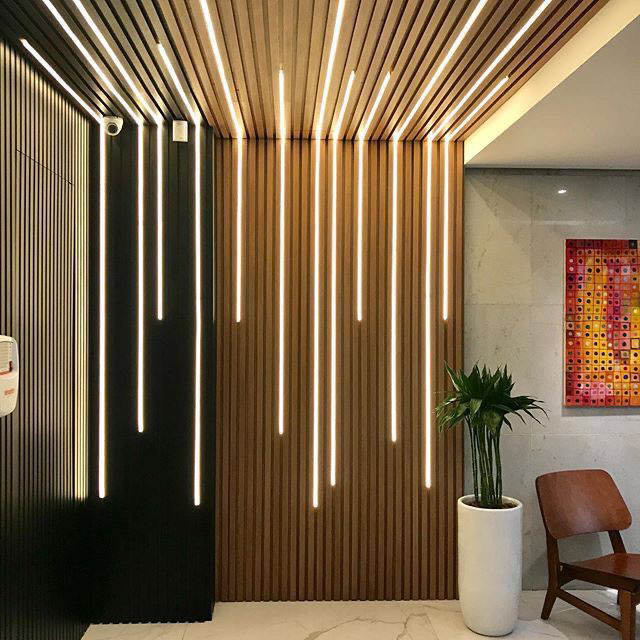WPC Louvers Introduction Brief introduction to WPC louvers, mentioning their growing popularity in modern architecture due to their durability, low maintenance, and aesthetic appeal. What are WPC Louvers? Define WPC Louvers: Explain that they are made from a combination of wood fibers and plastic, offering the best qualities of both materials. Discuss the manufacturing process briefly to highlight the eco-friendliness and sustainability of WPC products. Benefits of WPC Louvers Durability: Resistant to weather, pests, and moisture, making them ideal for outdoor use. Low Maintenance: Unlike wood, WPC louvers do not require painting or sealing, saving time and cost. Aesthetic Appeal: Available in various colors and finishes that mimic the look of natural wood. Eco-Friendly: Made from recycled materials, contributing to sustainable building practices. Versatility: Suitable for various applications such as shading, privacy screens, and decorative facades. Applications of WPC Louvers Residential Buildings: For shading, enhancing privacy, and adding a modern touch to homes. Commercial Projects: Used in office buildings, malls, and other commercial spaces for their aesthetic and functional benefits. Outdoor Structures: Ideal for pergolas, garden screens, and other outdoor installations due to their weather-resistant properties. Architectural Facades: Enhance the visual appeal of buildings with customized designs. Why Choose WPC Louvers Over Traditional Wood Comparison of WPC with traditional wood louvers in terms of cost, maintenance, longevity, and environmental impact. Installation and Maintenance Tips Installation: Simple and quick installation processes for different applications, with possible DIY approaches or professional services. Maintenance: Minimal upkeep required, with occasional cleaning to maintain their appearance. Conclusion Reinforce the advantages of WPC louvers, encouraging potential customers to choose them for their next architectural project.
Chat with us on WhatsApp
×
This is your website preview.
Currently it only shows your basic business info. Start adding relevant business details such as description, images and products or services to gain your customers attention by using Boost 360 android app / iOS App / web portal.
WPC Louvers Introduction Brief introduction t...

2024-08-27T05:58:23
WPC Louvers Introduction Brief introduction to WPC louvers, mentioning their growing popularity in modern architecture due to their durability, low maintenance, and aesthetic appeal. What are WPC Louvers? Define WPC Louvers: Explain that they are made from a combination of wood fibers and plastic, offering the best qualities of both materials. Discuss the manufacturing process briefly to highlight the eco-friendliness and sustainability of WPC products. Benefits of WPC Louvers Durability: Resistant to weather, pests, and moisture, making them ideal for outdoor use. Low Maintenance: Unlike wood, WPC louvers do not require painting or sealing, saving time and cost. Aesthetic Appeal: Available in various colors and finishes that mimic the look of natural wood. Eco-Friendly: Made from recycled materials, contributing to sustainable building practices. Versatility: Suitable for various applications such as shading, privacy screens, and decorative facades. Applications of WPC Louvers Residential Buildings: For shading, enhancing privacy, and adding a modern touch to homes. Commercial Projects: Used in office buildings, malls, and other commercial spaces for their aesthetic and functional benefits. Outdoor Structures: Ideal for pergolas, garden screens, and other outdoor installations due to their weather-resistant properties. Architectural Facades: Enhance the visual appeal of buildings with customized designs. Why Choose WPC Louvers Over Traditional Wood Comparison of WPC with traditional wood louvers in terms of cost, maintenance, longevity, and environmental impact. Installation and Maintenance Tips Installation: Simple and quick installation processes for different applications, with possible DIY approaches or professional services. Maintenance: Minimal upkeep required, with occasional cleaning to maintain their appearance. Conclusion Reinforce the advantages of WPC louvers, encouraging potential customers to choose them for their next architectural project.
2024-08-27T05:58:23
Keywords
- WPC Louvers
- wood fibers
- outdoor use
- WPC products
- modern touch
- natural wood
- visual appeal
- Minimal upkeep
- garden screens
- various colors
- best qualities
- privacy screens
- low maintenance
- office buildings
- aesthetic appeal
- recycled materials
- Brief introduction
- customized designs
- decorative facades
- growing popularity
- Outdoor Structures
- functional benefits
- potential customers
- occasional cleaning
- modern architecture
- Commercial Projects
- various applications
- environmental impact
- Residential Buildings
- professional services
- manufacturing process
- Architectural Facades
- different applications
- other commercial spaces
- possible DIY approaches
- traditional wood louvers
- next architectural project
- Traditional Wood Comparison
- other outdoor installations
- weather-resistant properties
- quick installation processes
- Maintenance Tips Installation
- sustainable building practices

Submit Your Enquiry